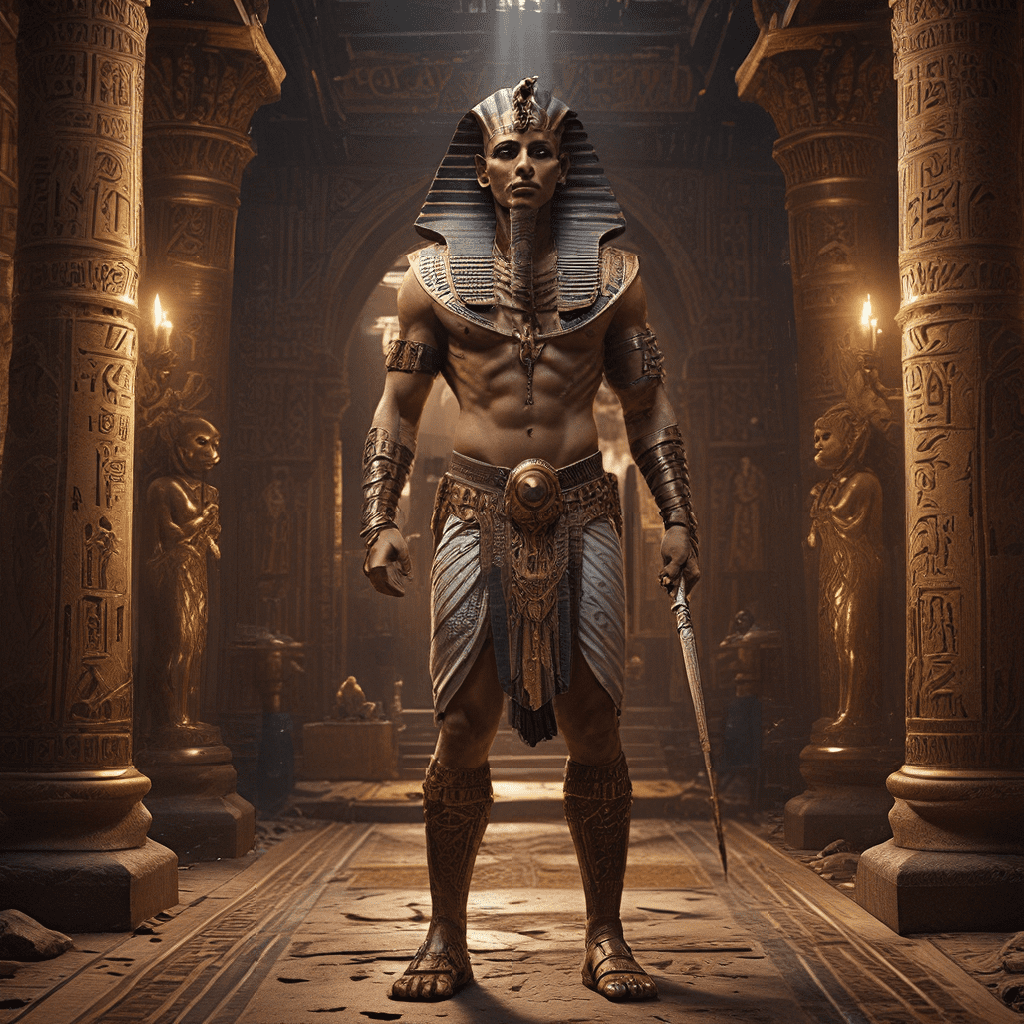1. Introduction: The Egyptian Concept of the Afterlife
Ancient Egyptians believed in an afterlife, a realm where their souls would journey after death. This concept was deeply ingrained in their culture and influenced their daily lives, from elaborate burial rituals to magnificent pyramids. The journey to the afterlife, according to Egyptian mythology, involved a series of trials and tribulations, culminating in a final judgment. The afterlife was not solely a place of judgment, but also a realm of possibilities, where the worthy could live in eternal bliss.
2. The Journey to the Underworld: Trials and Tribulations
The deceased soul, known as the “ka,” embarked on a perilous journey through the underworld, or “Duat.” This journey was filled with challenges and dangers. The “ka” had to navigate through various realms, encountering mythical creatures, perilous landscapes, and divine guardians. The “ka” was guided by the Book of the Dead, a collection of spells, rituals, and hymns intended to help the deceased navigate the labyrinthine underworld.
3. The Weighing of the Heart: Justice and Judgment
A pivotal moment in the journey to the afterlife was the “Weighing of the Heart.” The “ka” was brought before Osiris, the god of the underworld, and his heart was weighed against the feather of Ma’at, the goddess of truth and justice. If the heart was lighter than the feather, the deceased was deemed worthy of entering the afterlife. If it was heavier, the “ka” was devoured by the “Ammit,” a creature with the head of a crocodile, the paws of a lion, and the hindquarters of a hippopotamus. This symbolic judgment embodied the Egyptian belief in justice and accountability.
4. The Hall of Ma’at: A Test of Knowledge and Virtue
The Hall of Ma’at was a crucial part of the journey. It was a place where the deceased had to demonstrate their knowledge of the rituals and pronouncements of the gods. The “ka” needed to answer questions about their life and demonstrate their adherence to the principles of Ma’at, such as truth, justice, and order. These tests assessed the character and virtue of the deceased, ensuring their readiness for the afterlife.
5. The “Book of the Dead” as a Guide: Navigating the Underworld
The “Book of the Dead” was a comprehensive guide for the deceased, providing spells, prayers, and instructions for the afterlife journey. It contained chapters dedicated to various aspects of the underworld, including the rituals to be performed, the dangers to be avoided, and the prayers to be recited. By memorizing spells and understanding the contents of the “Book of the Dead,” the “ka” could successfully navigate the challenges of the underworld and gain access to the afterlife.
6. The Role of Gods and Goddesses: Guardians and Guides
The underworld was populated by a multitude of gods and goddesses, each with their specific roles and powers. Osiris, the god of the underworld, oversaw the entire process of judgment and passage into the afterlife. Other gods, like Anubis, the god of embalming and mummification, and Thoth, the god of wisdom and knowledge, played essential roles in guiding and assisting the “ka” on its journey. There were also dangerous entities, like the “Ammit,” who served as guardians and protectors of the underworld.
7. The “Games” of the Afterlife: Tests of Courage and Skill
Beyond the trials and tribulations, the underworld also featured elements of “games” and challenges. These activities tested the skills, knowledge, and courage of the “ka.” For example, the deceased might have to compete in races, solve riddles, or demonstrate their ability to navigate treacherous landscapes. These games were not merely for entertainment but served as a way to test the “ka” and ensure their preparedness for the afterlife.
8. The “Eternal Fields of Reeds”: A Reward for the Worthy
The ultimate reward for those who successfully passed the trials and tribulations of the underworld was access to the “Eternal Fields of Reeds,” a paradise like realm where the “ka” could enjoy eternal bliss. This realm was a place of peace, abundance, and joy, offering a tranquil existence for the worthy souls.
9. The Underworld as a Place of Entertainment: Beyond Punishment
The Egyptian underworld was not solely a place of punishment and judgment. It also contained elements of entertainment, festivals, and celebrations, reflecting the belief that the afterlife was a continuation of life. The realm of the gods was filled with music, dancing, and feasting, offering the worthy a vibrant and fulfilling existence.
10. Conclusion: The Enduring Appeal of the Egyptian Afterlife Games
The Egyptian concept of the afterlife, with its trials, tribulations, and rewards, offers a fascinating glimpse into the beliefs of a civilization that placed great importance on the afterlife. The “games” of the underworld, though challenging, were not meant to be punishments, but rather opportunities to prove one’s worth and prepare for a fulfilling life in the afterlife. The enduring appeal of the Egyptian afterlife games lies in their ability to capture the imagination and inspire reflection on the meaning of life and the possibilities beyond death.




